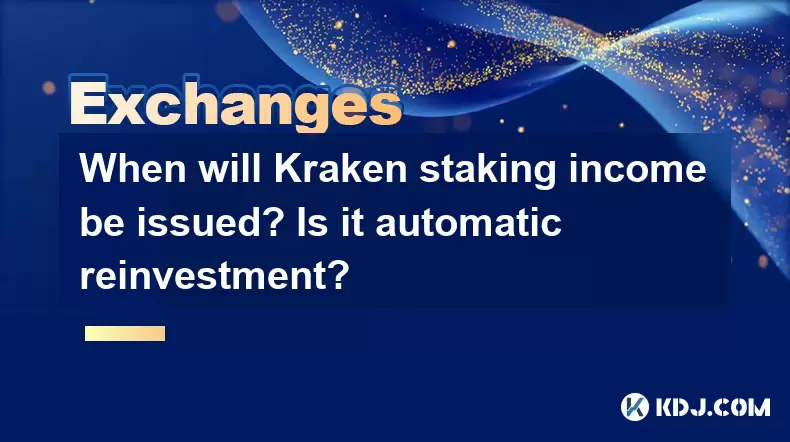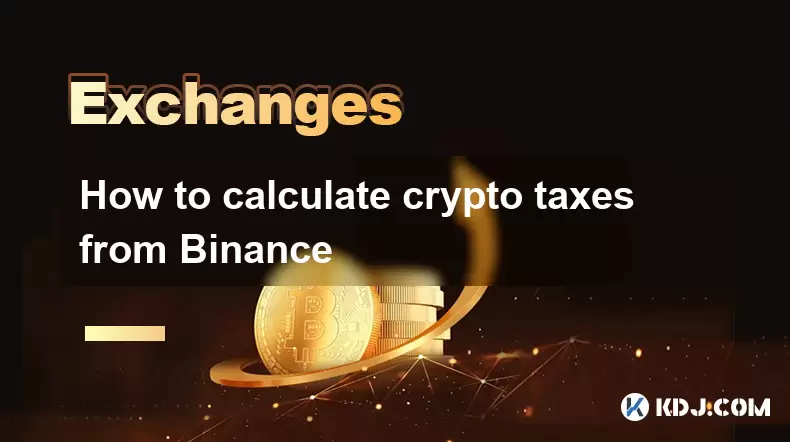-
 Bitcoin
Bitcoin $117500
2.15% -
 Ethereum
Ethereum $3911
6.19% -
 XRP
XRP $3.316
10.79% -
 Tether USDt
Tether USDt $1.000
0.01% -
 BNB
BNB $787.2
2.24% -
 Solana
Solana $175.2
4.15% -
 USDC
USDC $0.9999
0.00% -
 Dogecoin
Dogecoin $0.2225
8.40% -
 TRON
TRON $0.3383
0.28% -
 Cardano
Cardano $0.7868
6.02% -
 Stellar
Stellar $0.4382
9.34% -
 Hyperliquid
Hyperliquid $40.92
7.56% -
 Sui
Sui $3.764
7.63% -
 Chainlink
Chainlink $18.48
10.66% -
 Bitcoin Cash
Bitcoin Cash $582.1
1.88% -
 Hedera
Hedera $0.2601
6.30% -
 Avalanche
Avalanche $23.33
4.94% -
 Ethena USDe
Ethena USDe $1.001
0.02% -
 Litecoin
Litecoin $122.3
2.04% -
 UNUS SED LEO
UNUS SED LEO $8.969
-0.27% -
 Toncoin
Toncoin $3.339
0.86% -
 Shiba Inu
Shiba Inu $0.00001287
4.30% -
 Uniswap
Uniswap $10.43
7.38% -
 Polkadot
Polkadot $3.861
5.08% -
 Dai
Dai $1.000
0.02% -
 Bitget Token
Bitget Token $4.513
3.41% -
 Monero
Monero $267.7
-6.18% -
 Cronos
Cronos $0.1499
4.14% -
 Pepe
Pepe $0.00001110
5.15% -
 Aave
Aave $284.9
8.28%
When will Kraken staking income be issued? Is it automatic reinvestment?
Kraken staking income is issued weekly for most cryptocurrencies, but not automatically reinvested; users must manually reinvest their rewards.
May 19, 2025 at 05:00 am

When will Kraken staking income be issued? Is it automatic reinvestment?
Staking has become a popular way for cryptocurrency holders to earn passive income, and Kraken, one of the leading cryptocurrency exchanges, offers staking services for various cryptocurrencies. Understanding when staking income is issued and whether it is automatically reinvested is crucial for users looking to maximize their returns. This article will delve into the specifics of Kraken's staking income distribution and reinvestment policies.
Understanding Kraken Staking
Kraken offers staking services for a variety of cryptocurrencies, including but not limited to Ethereum (ETH), Cardano (ADA), and Tezos (XTZ). Staking involves holding funds in a cryptocurrency wallet to support the operations of a blockchain network. In return, stakers receive rewards, typically in the form of additional cryptocurrency.
To start staking on Kraken, users must first hold the supported cryptocurrency in their Kraken account. Once the cryptocurrency is deposited, users can enable staking through the Kraken platform. The process is straightforward, but it's important to understand the specifics of income distribution and reinvestment.
When is Kraken Staking Income Issued?
Kraken staking income is typically issued on a regular basis, but the exact timing can vary depending on the cryptocurrency being staked. For most cryptocurrencies, Kraken distributes staking rewards on a weekly basis. However, some cryptocurrencies may have different distribution schedules.
For example, Ethereum 2.0 staking rewards are distributed weekly, while Cardano staking rewards are distributed every five days. It's important for users to check the specific staking page on Kraken for the most accurate and up-to-date information on reward distribution schedules.
The distribution of staking income is credited directly to the user's Kraken account. Users can view their staking rewards in the "Staking" section of their Kraken account, where they can see the total amount of rewards earned and the date of the last distribution.
Is Kraken Staking Income Automatically Reinvested?
Kraken does not automatically reinvest staking income. Instead, the staking rewards are credited to the user's Kraken account in the form of the staked cryptocurrency. This means that users have the flexibility to decide what to do with their staking rewards.
Users can choose to withdraw their staking rewards, trade them for other cryptocurrencies, or manually reinvest them by adding them back to their staking balance. This flexibility allows users to manage their staking income according to their investment strategy.
To manually reinvest staking rewards, users can follow these steps:
- Log into your Kraken account.
- Navigate to the "Staking" section.
- Select the cryptocurrency you are staking.
- Click on "Reinvest" or "Add to Staking".
- Enter the amount of staking rewards you wish to reinvest.
- Confirm the transaction.
By manually reinvesting their staking rewards, users can compound their earnings over time, potentially increasing their overall returns.
How to Track Kraken Staking Income
Tracking your staking income on Kraken is essential for managing your investments effectively. Kraken provides a user-friendly interface that allows users to monitor their staking rewards easily.
To track your staking income, follow these steps:
- Log into your Kraken account.
- Go to the "Staking" section.
- Select the cryptocurrency you are staking.
- View the "Staking Rewards" tab.
In this section, you can see a detailed history of your staking rewards, including the amount received and the date of each distribution. This information can help you keep track of your earnings and plan your investment strategy accordingly.
Tax Implications of Kraken Staking Income
Understanding the tax implications of staking income is important for all users. In many jurisdictions, staking rewards are considered taxable income and must be reported on your tax return.
Kraken provides users with a yearly tax report that includes information on staking rewards earned throughout the year. This report can be used to help users accurately report their staking income to tax authorities.
It's advisable to consult with a tax professional to ensure compliance with local tax laws and regulations. Keeping detailed records of your staking income and transactions can also help simplify the tax reporting process.
Managing Kraken Staking Income
Effectively managing your Kraken staking income involves more than just tracking and reinvesting your rewards. It also includes understanding the risks and potential strategies for maximizing your returns.
Diversification is a key strategy for managing staking income. By staking multiple cryptocurrencies, users can spread their risk and potentially increase their overall returns. Kraken supports staking for a variety of cryptocurrencies, making it easy for users to diversify their staking portfolio.
Regular monitoring of your staking rewards and the performance of the cryptocurrencies you are staking is also important. By staying informed about market trends and the performance of the blockchain networks you are supporting, you can make more informed decisions about your staking strategy.
Frequently Asked Questions
Q: Can I stake any cryptocurrency on Kraken?
A: No, Kraken supports staking for a specific list of cryptocurrencies. You can check the Kraken website for the most up-to-date list of supported cryptocurrencies for staking.
Q: What happens if I withdraw my staked cryptocurrency from Kraken?
A: If you withdraw your staked cryptocurrency from Kraken, you will no longer earn staking rewards on that amount. However, any rewards earned up to the point of withdrawal will remain in your Kraken account.
Q: Are there any fees associated with staking on Kraken?
A: Kraken does not charge any fees for staking. However, there may be network fees associated with the blockchain you are staking on, which are not controlled by Kraken.
Q: Can I use my staked cryptocurrency for trading while it is staked?
A: No, once you stake your cryptocurrency on Kraken, it is locked and cannot be used for trading until you unstake it.
Disclaimer:info@kdj.com
The information provided is not trading advice. kdj.com does not assume any responsibility for any investments made based on the information provided in this article. Cryptocurrencies are highly volatile and it is highly recommended that you invest with caution after thorough research!
If you believe that the content used on this website infringes your copyright, please contact us immediately (info@kdj.com) and we will delete it promptly.
- SNEK, Cardano, and the Contributor's Conundrum: A Meme Coin's Fight for Recognition
- 2025-08-08 16:30:12
- Toshi Crypto's Wild Ride: Rally, Demand Slump, and What's Next
- 2025-08-08 16:30:12
- Ethereum, Staking Yields, and DeFi Exposure: A New Era for Investors?
- 2025-08-08 15:10:12
- Unilabs Pumps MIA, Binance Coin Bouncing Back, and Ethereum's Bearish Blues
- 2025-08-08 15:10:12
- Ethereum's Wyckoff Markup and Market Rotation: A New Era?
- 2025-08-08 15:30:12
- Ethereum, Vitalik Buterin, and the Overleveraged Game: A Balancing Act
- 2025-08-08 15:30:12
Related knowledge

How to use margin trading on Poloniex
Aug 08,2025 at 09:50am
Understanding Margin Trading on Poloniex

How to use advanced trading on Gemini
Aug 08,2025 at 04:07am
Understanding Advanced Trading on GeminiAdvanced trading on Gemini refers to a suite of tools and order types designed for experienced traders who wan...

How to deposit USD on Bitstamp
Aug 07,2025 at 05:18pm
Understanding Bitstamp and USD DepositsBitstamp is one of the longest-standing cryptocurrency exchanges in the industry, offering users the ability to...

How to use the Kraken Pro interface
Aug 08,2025 at 09:57am
Understanding the Kraken Pro Interface LayoutThe Kraken Pro interface is designed for both novice and experienced traders seeking a streamlined experi...

How to find my transaction ID on Gemini
Aug 08,2025 at 12:50am
Understanding the Transaction ID in Cryptocurrency ExchangesA transaction ID (TXID) is a unique alphanumeric string that identifies a specific transfe...

How to calculate crypto taxes from Binance
Aug 08,2025 at 07:56am
Understanding Cryptocurrency Taxation on BinanceCalculating crypto taxes from Binance requires a clear understanding of how tax authorities classify d...

How to use margin trading on Poloniex
Aug 08,2025 at 09:50am
Understanding Margin Trading on Poloniex

How to use advanced trading on Gemini
Aug 08,2025 at 04:07am
Understanding Advanced Trading on GeminiAdvanced trading on Gemini refers to a suite of tools and order types designed for experienced traders who wan...

How to deposit USD on Bitstamp
Aug 07,2025 at 05:18pm
Understanding Bitstamp and USD DepositsBitstamp is one of the longest-standing cryptocurrency exchanges in the industry, offering users the ability to...

How to use the Kraken Pro interface
Aug 08,2025 at 09:57am
Understanding the Kraken Pro Interface LayoutThe Kraken Pro interface is designed for both novice and experienced traders seeking a streamlined experi...

How to find my transaction ID on Gemini
Aug 08,2025 at 12:50am
Understanding the Transaction ID in Cryptocurrency ExchangesA transaction ID (TXID) is a unique alphanumeric string that identifies a specific transfe...

How to calculate crypto taxes from Binance
Aug 08,2025 at 07:56am
Understanding Cryptocurrency Taxation on BinanceCalculating crypto taxes from Binance requires a clear understanding of how tax authorities classify d...
See all articles

























































































